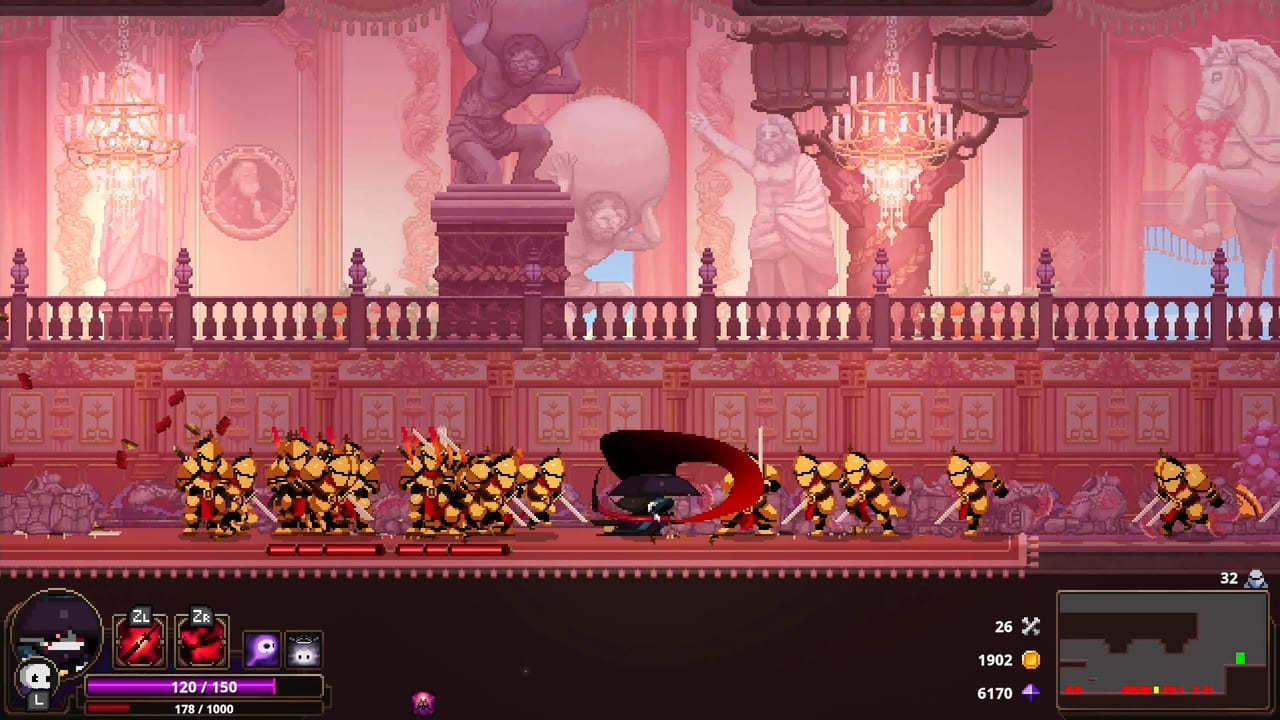

If you encounter an ability set that you don’t like, The Hero Slayer lets you break it down into bone, which is a currency for upgrading skull forms. Skulls are rated by rarity, and you’ll find the more exotic ones like the Ninja, who can triple jump around the screen, exceedingly useful. Pleasingly, The Hero Slayer lefts you swap between two forms, often with another attack triggers during the transition.Įach skull is built around a different playstyle, with the aforementioned Hunter surviving by maintaining a distance from opponents, while the Jinn and Dark Paladin favor getting up close to foes before nailing them with a body slam. While most skulls provide melee-based capabilities, the Hunter can fire arrows with the possibility of launching a powerful piercing shot. You can also toss out chains, lassoing enemies and dragging them behind you. For the fire-blazing Rider, you’ll dish out punishment from atop the Hell Bike, damaging anything unfortunate enough to be in your path. Most skulls offer two core capabilities controlled by cooldown timers. Beyond a few of the transformation types (Samurai, Berserker) and a number of similar ones, success hinges on improvisation. As such, it seems possible that the seven-person development team of SouthPAW Games was influenced by Sega Technical Institute’s 1992 title, Kid Chameleon. Many of these are forms are built around popular game archetypes. Periodically, you’ll swap your own skull with found ones, providing a new ability set and appearance. You play as the eponymous undead lead, trying to rescue the Demon King after the ruler was kidnapped by troublesome humans.

The allusion is undoubtedly intentional, with Dead Cells protagonist, The Prisoner, making a cameo appearance in Skul.īut it’s hard to tell if The Hero’s Slayers other similarities are deliberate. The punishment for dying is similarly harsh, with players forced to forfeit almost all of their progress. Each is a roguelike, tasking players to make the most of random power-ups as they make their way through the game. The most obvious analogue is Dead Cells, with both games sending amorphous characters through procedurally generated, side-scrolling stages. Price: $19.99 via digital download, launch discount $15.99 through 2/3įounded four years ago by a group of students at Chonnam National University in South Korea, Skul: The Hero Slayer is a game fated for comparison.


 0 kommentar(er)
0 kommentar(er)
